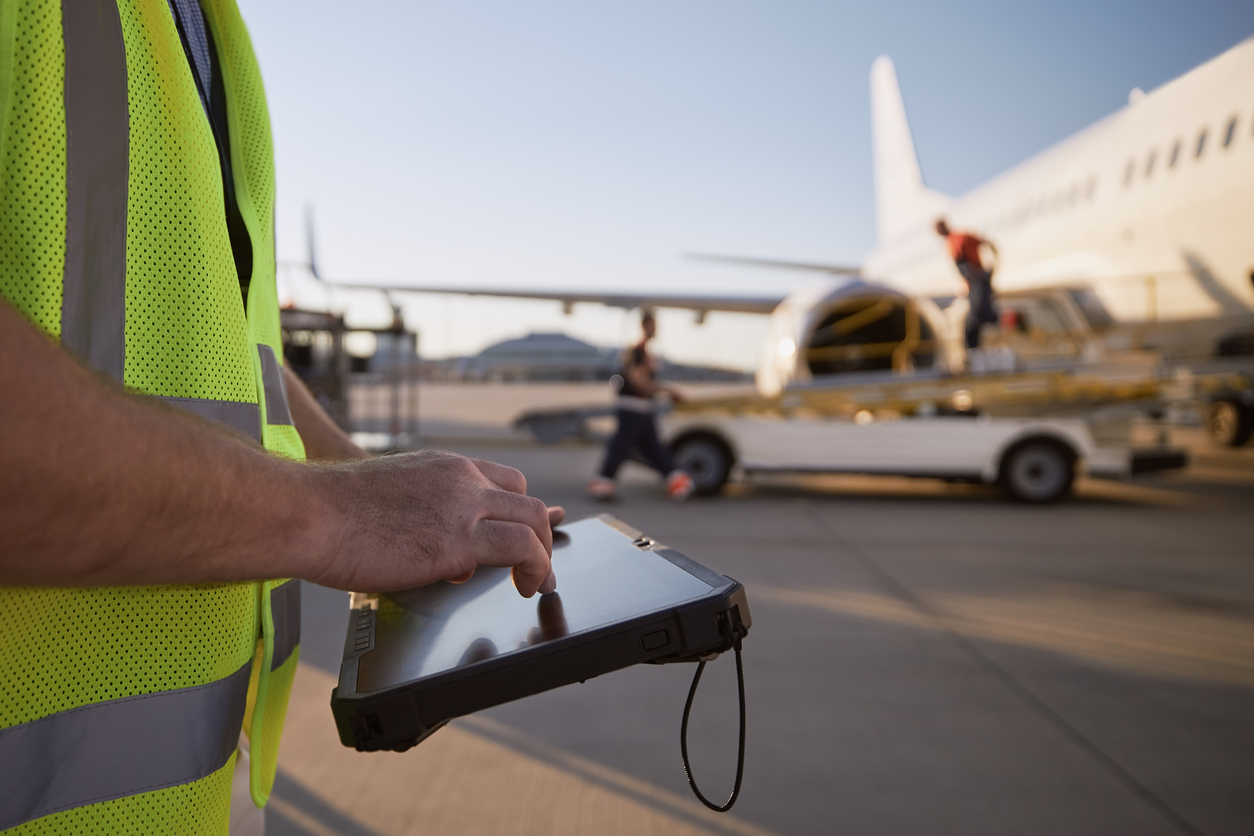M3 blog
Shared v Dedicated Device Models

Mobile devices have become a crucial component to many businesses in the current digital era, including the maintenance, repair, and overhaul (MRO) market for airlines. For operations to be optimized, data security to be maintained, and overall productivity to be increased, these devices must be managed effectively. This article aims to explore mobile device management in the MRO and Airline industry and the pros and cons of shared vs dedicated device management.
What is Mobile Device Management (MDM)?
The term “mobile device management” (MDM) refers to an organization’s complete management and control of mobile devices, applications, and data. Device provisioning, security enforcement, app delivery, and remote device administration are functions that MDM solutions provide. In the airline industry MDM can lead to improved operational efficiency and lower cost of ownership.
Shared device model in the airline industry
Devices used by numerous people throughout the day within a company are known as shared devices. This model of asset management is extremely cost-effective and optimizes the resources already available at a company. Businesses have a lower cost-of-ownership with this model and benefit from a reduction in the need for IT resources required to manage individually owned devices. For the airline industry, managing a fleet of shared devices is simpler than managing multiple independent devices as organizations can centrally manage security standards, upgrades, and device configurations. A shared device model allows organisations to additionally benefit from synchronized content across devices. In the MRO and Airline industry, this means maintenance manuals and technical publications can be shared across devices ensuring that each employee has the most up to date information.
Of course, data breaches and unauthorized access are always a consideration in sensitive environments such as the Airline sector. When numerous users have access to the same device, extra measured need to be taken to protect data. Establishing individual accountability when several users share devices is difficult and inevitably leads to human error.
Dedicated Devices in the airline industry
On the other hand, a dedicated device model is a system where devices are given to each individual employee. Each employee is given a device relevant to their role to complete their work, they are solely responsible for keeping it safe and ensuring its correct use. Dedicated devices can be beneficial as organizations can put strict security measures in place to protect sensitive data. Data confidentiality is ensured by personal authentication and encryption. As the devices are only used by one person, the organization can easily pre-load the relevant software that is required by each individual employee for their exact job function, removing the distraction of less relevant apps and software.
Although a dedicated device model has many benefits, there are some restrictions to consider. Compared to a shared device model, providing dedicated devices to each user can be more expensive and might not be as versatile or adaptive to diverse tasks. This may restrict an employee’s ability and flexibility to adapt to everchanging changing job demands. With dedicated devices, businesses must ensure each device receives prompt maintenance, upgrades, charging and support. As a result, this type of device fleet may require additional resources to manage.
Choosing the right approach
When deciding which model suits your organization, it is crucial to consider certain factors. The three key areas that M3 Solutions encourages businesses to look at is; Unique needs of the organization, data security and cost effectiveness.
It is critical to evaluate the unique needs and specifications of the operations, workflow, and the org-chart as this can impact the efficiency of each model. It is important to also consider elements such as user count, job function and data security requirements. Most MRO departments follow a similar trend in terms of team structure and workflow which lends itself well to a shared device model.
Considering the significance of data privacy and security of the employees using the devices. Evaluating the range of data privacy and security, what information can be shared across teams and what information sensitive must be looked at before deciding on an MDM model. Within MRO teams, information is often shared between technicians to perform duties. Therefore, implementing a shared device model is useful, as it allows for one source of truth across all devices, ensuring the data and content is consistent.
Finally, considering cost-effectiveness and financial restrictions is the final stage in choosing an MDM. As to be expected neither option is low cost, however there is some aspects of a shared device model that will reduce the overall cost of investment for an organisation and allow for a quicker ROI. By not having one device for every employee the initial cost of purchasing devices is lower along with the maintenance and management IT labour costs. However, these devices will ultimately receive more wear and tear, this is a calculation that a company will need to consider, based on individual needs.
Conclusion
In the aircraft MRO sector, every second matters and efficient MDM is essential to streamlining processes, ensuring data security, and boosting productivity. Numerous factors, including organizational goals, data security requirements, economic considerations, influence the decision for a shared MDM system or a dedicated MDM system. Successful device management depends on putting best practices into practice, such as creating security processes, offering training, and taking maintenance requirements into account.




